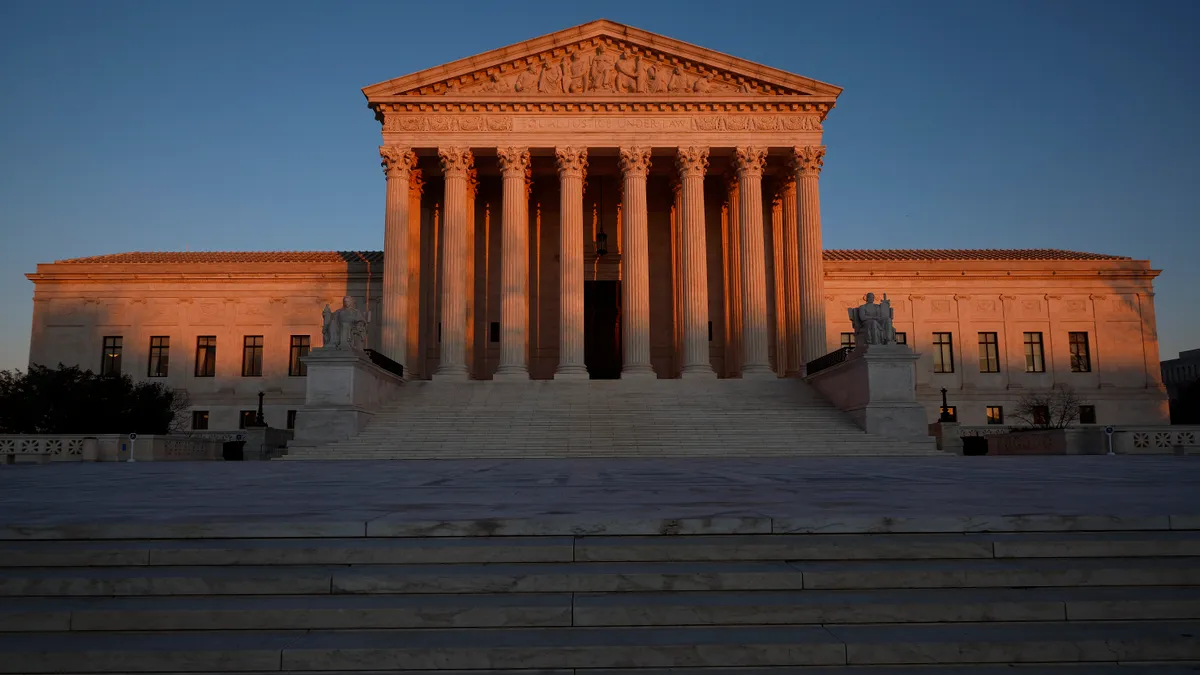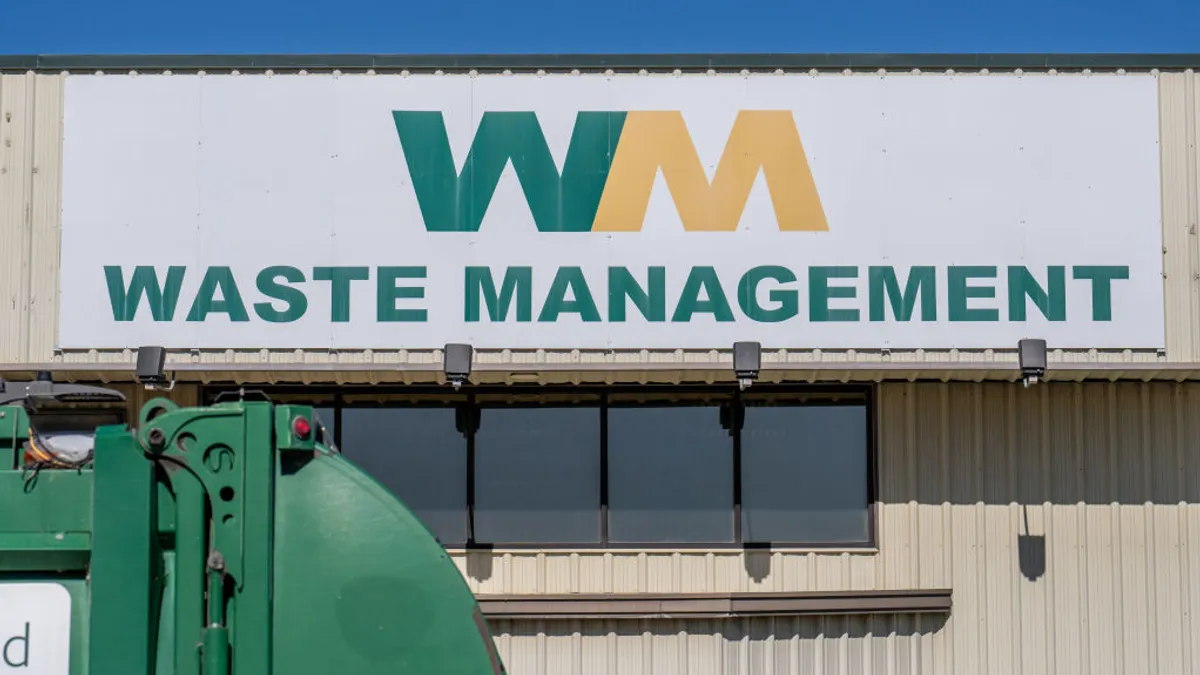The U.S. Supreme Court’s decision to reverse the “Chevron doctrine” has raised questions about how the move could affect federal statutes relevant to the waste and recycling industry, particularly those under the U.S. EPA and Department of Labor.
The Chevron doctrine, decided in a 1984 U.S. Supreme Court decision, Chevron U.S.A. v. Natural Resources Defense Council, determined that in cases where a federal statute is ambiguous, courts should defer to agency interpretations of such statutes as long as it’s a “reasonable” interpretation.
In June, the Supreme Court voted 6-3 in Loper Bright Enterprises v. Raimondo to overturn the Chevron doctrine, saying that courts instead must “exercise their independent judgment in deciding whether an agency has acted within its statutory authority.”
Though the long-term impacts of the decision are yet to be determined, some experts say the Chevron reversal could make it easier for those who oppose certain federal regulations — affecting any industry — to challenge them in court.
Others say it may not make an immediate impact on the waste industry, but could eventually introduce more legal complexity when considering aspects of rules such as the EPA’s recent hazardous substance designation for certain PFAS or OSHA’s proposed heat standard.
Meanwhile, another recent Supreme Court ruling, Corner Post v. Board of Governors of the Federal Reserve System, also has implications for challenging agency regulations. Previously, parties had six years to challenge a rule once it was issued, but Corner Post changes that timeline to begin when a party is harmed by the rule. That could “reset the clock” for entities challenging certain rules, said James Slaughter, a principal at Beveridge & Diamond who works regularly with the waste industry.
The Chevron deference reversal, along with Corner Post, are among the new Supreme Court rulings that “are the new rules of the road that will guide the solid waste industry as it deals with EPA regulations and enforcement actions,” he said.
Operational impacts
Though waste and recycling companies are monitoring the possible ripple effects of the Loper Bright decision, some leaders say they don’t expect to see immediate effects on daily operations.
The Loper Bright decision might create opportunities for the solid waste and recycling sectors to challenge federal regulations and enforcement actions. Yet the Supreme Court case doesn’t affect state and local regulations, which make up the bulk of regulations relevant to waste and recycling operations, Slaughter said.
During an earnings call last week, in reference to PFAS cleanup opportunities, Clean Harbors co-CEO Eric Gerstenberg said the Chevron reversal “is not going to have any effect on the regulatory environment for us … The regulations today, those aren’t going to be changed.”
WM CEO Jim Fish echoed that sentiment during his company’s recent earnings call, adding that “the business itself does really well in just about any regulatory environment short of somebody coming in and saying, you know, landfills are closed all tomorrow morning,” he said. “But short of that, we are pretty agnostic with respect to regulation, whether it's the Chevron doctrine or whatever it is.”
Possible impacts on PFAS rules and regulations
One area for potential complex legal challenges is related to the EPA’s recent designation of two per-and polyfluoroalkyl substances as hazardous substances under the Comprehensive Environmental Response, Compensation and Liability Act, known as CERCLA or Superfund.
The National Waste & Recycling Association and the Recycled Materials Association are among the groups that have asked a federal court to review the rule. The petitions do not mention Loper Bright, and NWRA President and CEO Michael E. Hoffman clarified that the legal action was “not emboldened by Chevron” being reversed.
However, as the EPA defends its hazardous substance rule from numerous entities, the Loper Bright ruling will “certainly make this particular litigation [over the Superfund PFAS rule] more difficult,” former EPA Region 2 official Walter Mugdan told Inside EPA.
According to a July 17 assessment from Jefferies, the Loper Bright decision “does not immediately put the CERCLA designation at risk” because the Chevron doctrine only applied to statutes that are ambiguous. Citing an attorney, Jefferies states the argument that section 102a of the statute “clearly gives the EPA the authority to make direct chemical designations.”
However, the Jefferies analysis points out there may be some “vulnerability” related to how the EPA has defined “substantial danger,” as “the backbone of the CERCLA designation is the EPA's finding that there is a substantial danger presented by PFOA and PFOS.”
Speaking more generally about the potential for more EPA decisions to be challenged in court under Loper Bright, Hoffman said the EPA may have “seen the writing on the wall” that Chevron would be overturned, which could be a reason the agency has not overly relied on Chevron deference in recent years when promulgating a rule, he said.
Loper Bright’s effect on future federal rulemaking
Going forward, experts say the Loper Bright decision’s influence will likely come through as federal agencies continue to write new rules. When agencies keep in mind that they will no longer receive Chevron deference in their interpretation of statutes, that “should affect and temper federal agency rule writing efforts to try to more strictly follow the dictates of the text of the law as written,” Slaughter said.
As an added effect, Loper Bright might also create more opportunities for the industry to “engage with federal regulators on the front end when new rules are written,” which could include advocating for certain statute interpretations when submitting comments during the rulemaking process, he added.
One subject currently making its way through the rulemaking process is OSHA's long-awaited proposed standard to protect indoor and outdoor workers across the country from extreme heat. The proposed standard will be open for public comments soon.
That proposed rule was in the works well before the Chevron deference reversal, and it’s unclear whether Loper Bright will come into play related to the ongoing heat standard rulemaking process. Yet lawyers at firm Ogletree Deakins wrote in a blog post that they are monitoring the process, as “potential challenges to OSHA’s newly proposed heat standard could give the Supreme Court another opportunity to question and potentially curtail OSHA’s overall authority,” they wrote.
However, Loper Bright and other recent Supreme Court actions do not give the Supreme Court the ability to tell a government agency “that it cannot have a workplace safety and health law or agency, but it does mean that Congress may have to do a better job of delegating authority and giving more clear and limited guidance to executive agencies,” they wrote.
The Natural Resources Defense Council, the original plaintiff in the Chevron case, has spoken out against the Loper Bright decision, saying it significantly curtails the ability of the EPA and other agencies to enforce certain environmental protections. Yet NRDC points out that the decision “cuts both ways,” meaning an administration with a deregulatory mindset might still be overruled by a judge “with a different way of seeing things.”



















